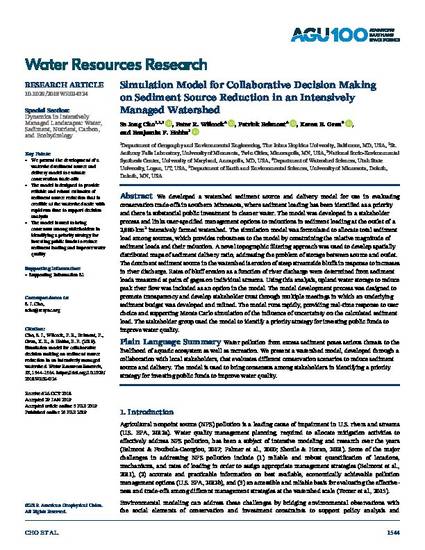
Article
Simulation Model for Collaborative Decision Making on Sediment Source Reduction in an Intensively Managed Watershed
Water Resources Research
(2019)
Abstract
We developed a watershed sediment source and delivery model for use in evaluating conservation trade‐offs in southern Minnesota, where sediment loading has been identified as a priority and there is substantial public investment in cleaner water. The model was developed in a stakeholder process and links user‐specified management options to reductions in sediment loading at the outlet of a 2,880‐km2 intensively farmed watershed. The simulation model was formulated to allocate total sediment load among sources, which provides robustness to the model by constraining the relative magnitude of sediment loads and their reduction. A novel topographic filtering approach was used to develop spatially distributed maps of sediment delivery ratio, addressing the problem of storage between source and outlet. The dominant sediment source in the watershed is erosion of steep streamside bluffs in response to increases in river discharge. Rates of bluff erosion as a function of river discharge were determined from sediment loads measured at pairs of gages on individual streams. Using this analysis, upland water storage to reduce peak river flow was included as an option in the model. The model development process was designed to promote transparency and develop stakeholder trust through multiple meetings in which an underlying sediment budget was developed and refined. The model runs rapidly, providing real‐time response to user choice and supporting Monte Carlo simulation of the influence of uncertainty on the calculated sediment load. The stakeholder group used the model to identify a priority strategy for investing public funds to improve water quality.
Disciplines
Publication Date
2019
DOI
https://doi.org/10.1029/2018WR024324
Citation Information
Patrick Belmont. "Simulation Model for Collaborative Decision Making on Sediment Source Reduction in an Intensively Managed Watershed" Water Resources Research Vol. 55 Iss. 2 (2019) p. 1544 - 1564 Available at: http://works.bepress.com/patrick_belmont/122/
